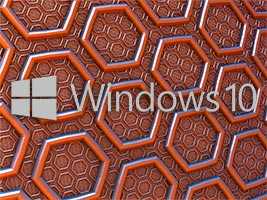Microsoft’s Windows 10 operating system launched this week with surprisingly little by way of fanfare from the company themselves but a great deal riding on its success. Unlike with some of the operating system launches of the past, Microsoft have not relentlessly beaten the marketing drum for Windows 10 but the launch has still been an eagerly anticipated one and the operating system has already seen millions of people rush to upgrade.
There are two main reasons why this launch has attracted so much consumer attention – and is predicted to continue to do so – and these revolve around the way in which it has been rolled out and the system which it replaces.
As well as being the default operating system for new Microsoft PCs, tablets and devices to hit the market from this week onwards, Windows 10 has also been made available for free to the majority of existing Windows users.
For a full twelve months from 29th July 2015, users who currently run Windows 7 Home and Professional or Windows 8 Home and Professional with the 8.1 update can install Windows 10 free of charge, avoiding the cost which they would incur for upgrading after that 12 months has elapsed. Many people have already taken Microsoft up on this offer not just because of its gratis nature but also due to their dislike for the current Windows 8.
How do you Solve a Problem like Windows 8?
The second major reason why so many users have been excited about the launch of Windows 10 is because of the unpopularity of Windows 8, and those people hoping that the new operating system will cure the ills of its predecessor have not been disappointed.
There are a whole raft of hated and maligned elements of Windows 8 which the newly launched Windows 10 has aimed to remove or improve, and some of the most notable include:
- The return of a start menu – The huge majority of Microsoft users were incredulous when Windows 8 scrapped the traditional start menu and the company have bowed to that pressure by restoring it in Windows 10. As well as featuring most of the main elements of the Windows 7 start menu, Windows 10’s version also includes a section incorporating the ‘tiles’ from Windows 8 but in a far more user-friendly manner.
- The restoration of windows – The original Microsoft operating systems were called ‘Windows’ because they allowed users to arrange their work within those eponymous features. Windows 8 unfortunately made it far more difficult to re-size and move these windows but Windows 10 has sought to remove those largely counter-intuitive difficulties.
- The replacement of Internet Explorer – For a long time Microsoft’s Internet Explorer has been a wildly unpopular browser that most users avoided like the plague. Windows 10 has finally scrapped it and replaced it with the sleeker and quicker Edge browser, more in the mould of Google Chrome and other more popular options.
Moving Forward
Early signs suggest that Windows 10 is being well-received in the days following its launch but those many issues with Windows 8, coupled with the fact that Microsoft have been somewhat left behind in the mobile device market, means that the company are hugely reliant on that goodwill translating to long-lasting success.
If Microsoft are indeed going to enjoy that kind of success and remain competitive within the ever-changing IT sector a lot will ride on Windows 10, which is slated to be the ‘last’ version of Windows to be released. It is for that reason therefore, that this launch is so fascinating for anyone who is interested in the future of Microsoft, how their own devices will be operated for years to come and the shape of the IT sector more generally.




